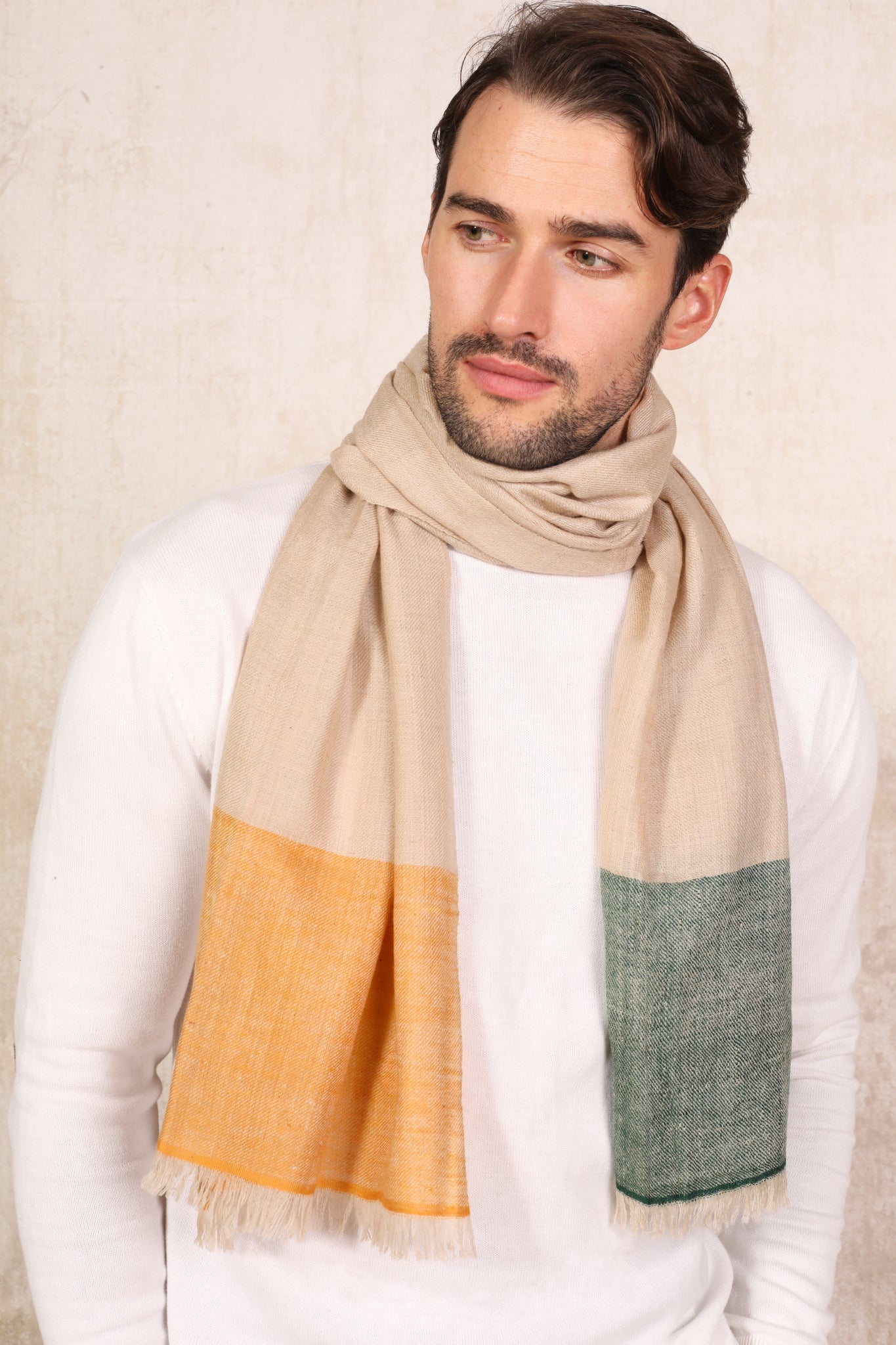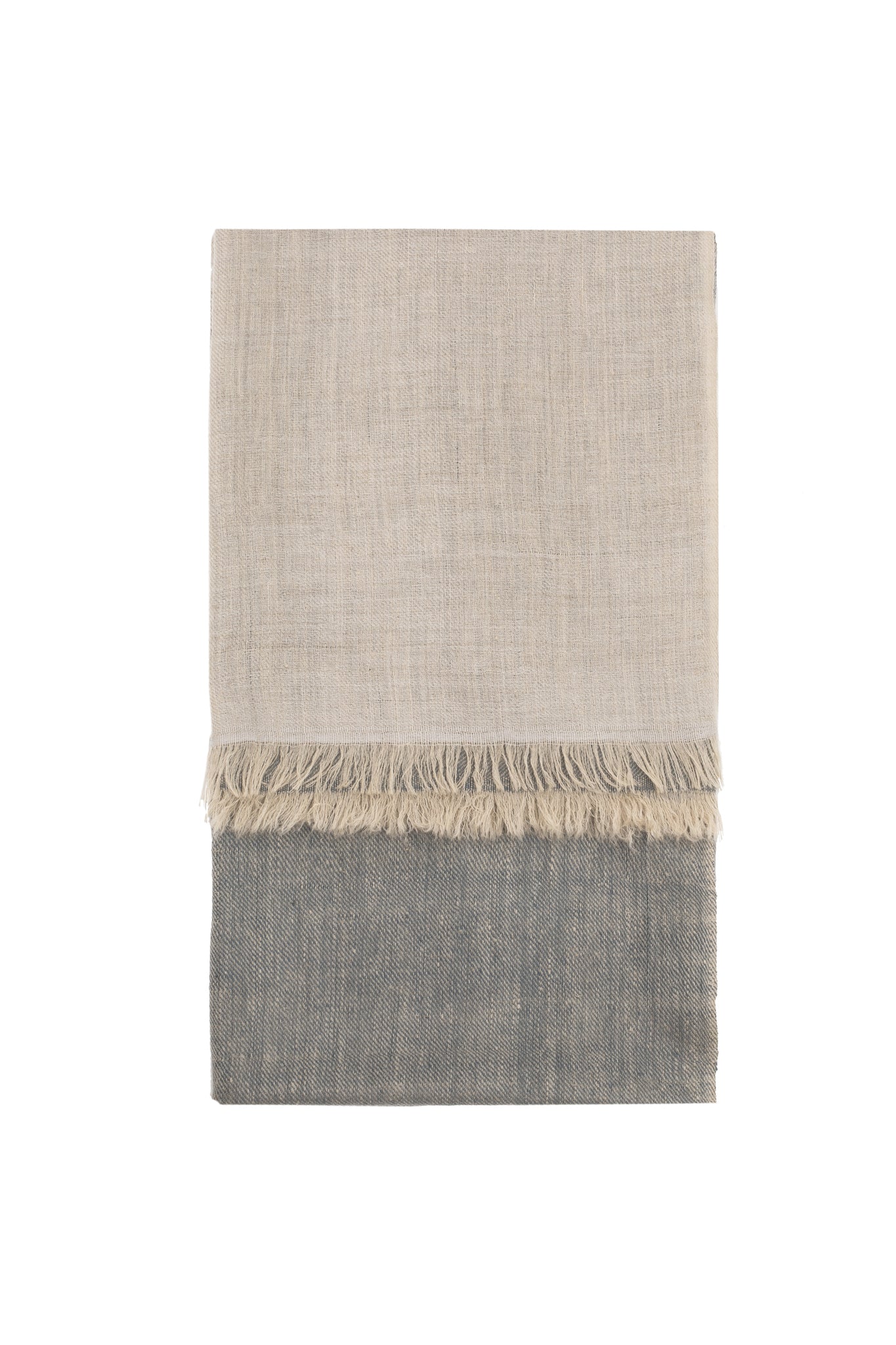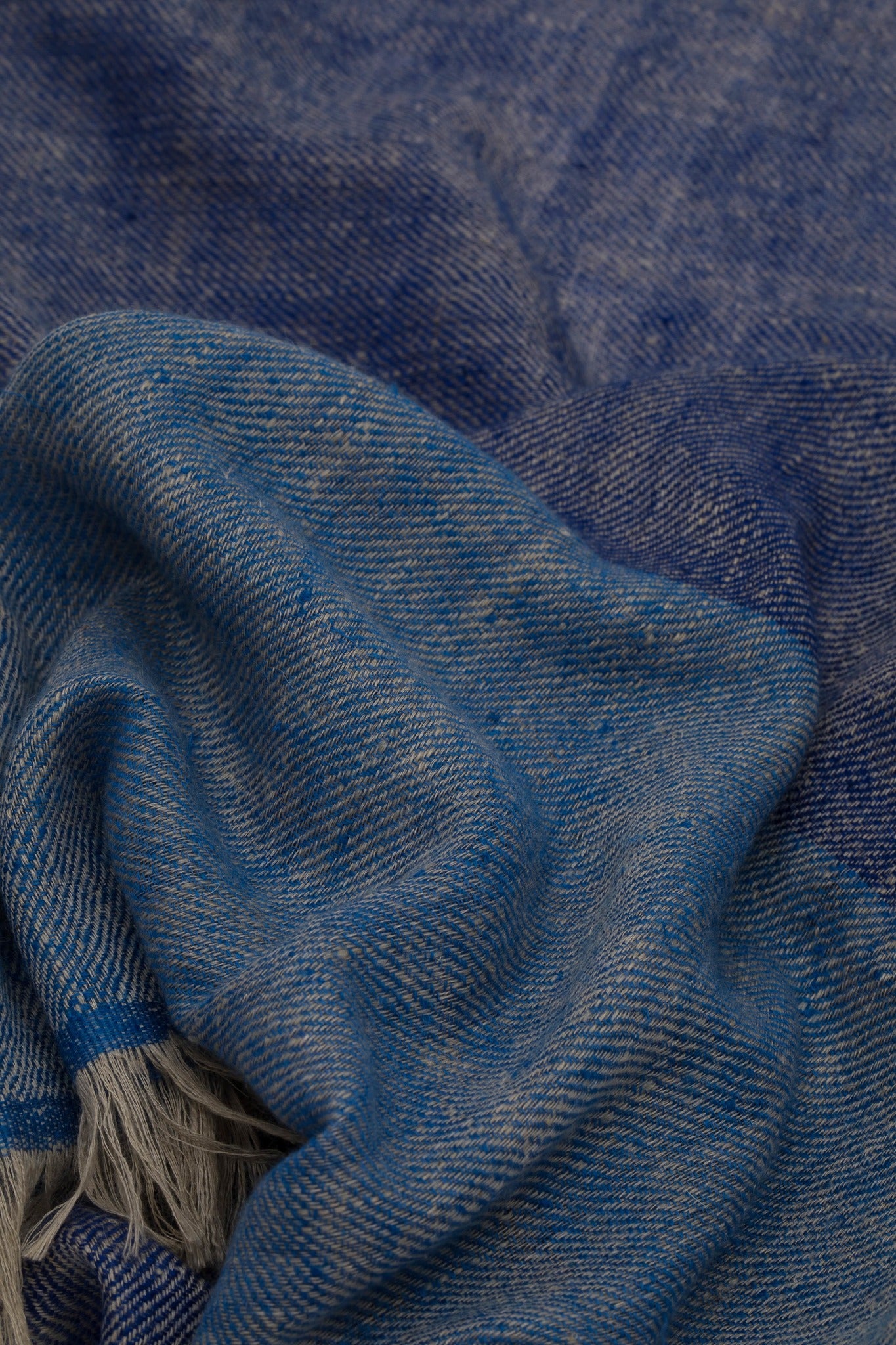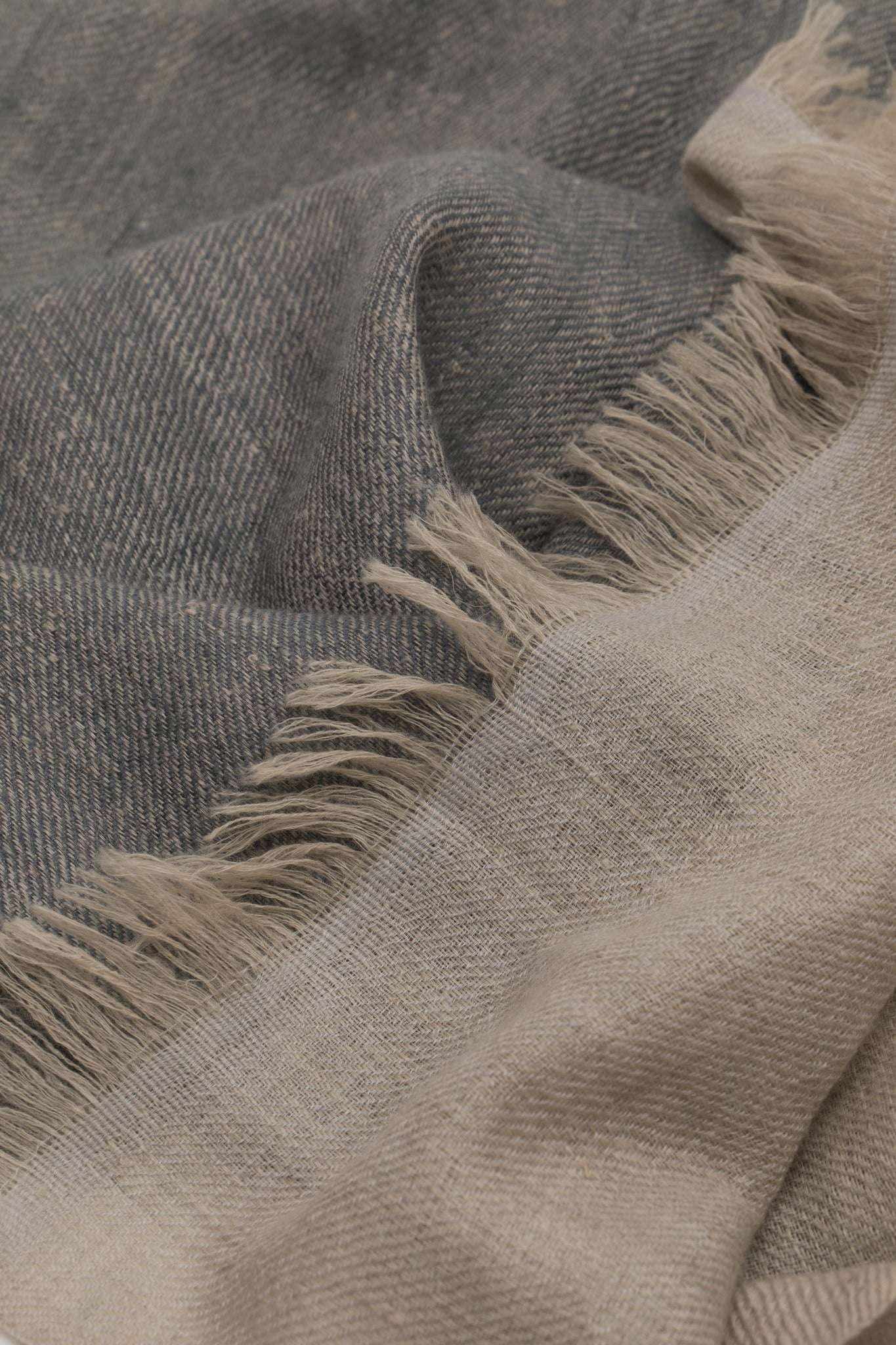Filters
GI-Certified Scarves - Luxury Is Quality
All our cashmere scarves are GI-Certified. This guarantees the use of 100% pure Pashmina in the production of the scarf from the region of Kashmir, India. It also confirms that the cashmere wool is under 16µm (microns), spun into yarn by hand using Charkha (spinning wheel) and then hand-woven by the local artisans using the traditional looms.

The Process
A short glimpse into the making of our luxury Cashmere Scarves
Initial Stages: Prepare Yarn & Warp
Our skilled Kashmiri artisans preparing the fine Cashmere yarn to be used as a 'Warp' using the traditional hand tools.
Final Stages: Weaving & Final Touches
The weaving of the scarf is still done using the traditional loom and within the comfort of the homes of the artisans. Any unwanted threads are clipped by hand using tweezers with due diligence.

What is Pashmina?
Pashmina is the finest form of spun cashmere. It is made using the wool found under the neck area of the Changthangi goats. The Changthangi goats are a breed of cashmere goat native to the region of Ladakh which is the highest plateau in northern India and situated on the western end of the Himalayas.
Not all Cashmere is Pashmina.
Both Generic Cashmere and Pashmina come from the same goat. But the fibre of generic Cashmere ranges from 12 to 21 microns in length, whereas the Pashmina refers only to those fibres that range from 12 to 16 microns in length.
Changthangi Goats Of Himalayas

Why Kashmir?
Cashmere derives its name from the Kashmir valley. The craftsmanship of making both the cashmere wool and scarves dates back to the 13th Century. Even today the artisans use the same old aged techniques to make the scarves in the comfort of their homes.





